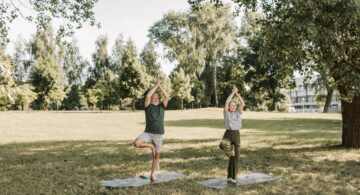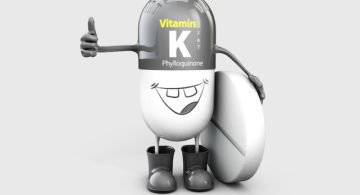Exercise and You Might Be Able to Rewrite Your Future
Despite your body beginning to wear out as you age, there is still much you can do to slow and reverse the trend.
As part of a long-term study to determine how post-middle age changes in physical activity affect mortality rates, 2,205 Swedish men were initially surveyed from 1970 to 1973 at the age of 50. Each participant was categorized into one of four groups according to their level of physical activity: sedentary, low, medium or high. Researchers followed up as they turned 60, 70, 77 and 82.
The study team found what you would expect: exercising more translated into lower mortality rates in all exercising groups. But the study also revealed some surprising findings.
Those who raised their level of physical activity between the ages of 50 and 60 experienced the same mortality rates as those men who had always maintained high levels of physical activity.
The results were so pronounced that the study team compared the reduction in mortality to people who stop smoking. “Increased physical activity in middle age is eventually followed by a reduction in mortality to the same level as seen among men with constantly high physical activity.
This reduction is comparable with that associated with smoking cessation,” writes the study team. However, the researchers found that in order for low-level exercisers to “catch up,” they would need to maintain regular physical activity for at least five years.
The study was published in the British Medical Journal. It confirms we can reverse some of the damage done in earlier years and become as healthy as people who have maintained a healthy lifestyle for most of their lives. In fact, researchers at the University of Pittsburgh finally answered the question, “Is physical frailty inevitable as we grow older?”
That question preoccupies scientists and the middle-aged. Until recently, the evidence was disheartening.
A large number of studies in the past few years showed that after age 40, people typically lose 8 percent or more of their muscle mass each decade. Then the process accelerates significantly after age 70.
Less muscle mass generally means less strength, mobility and independence. It also has been linked with premature mortality. But a growing body of newer science suggests that such decline may not be inexorable. A study published in the October, 2011 issue of The Physician and Sports medicine gives us new hope.
The new thinking goes like this: Exercise and you might be able to rewrite the future for your muscles.
Researchers found there was little evidence of deterioration in the older athletes’ musculature. The athletes in their 70s and 80s had almost as much thigh muscle mass as the athletes in their 40s, with minor, if any fat infiltration.
The athletes also remained strong. There was a drop-off in leg muscle strength around age 60 in both men and women. They weren’t as strong as the 50-year-olds, but the differential was not huge, and little additional decline followed.
That means the 70 and 80-year-old athletes were about as strong as those in their 60s. So,
people don’t have to lose muscle mass and function as they grow older. The changes that we’ve assumed were due to aging, and therefore unstoppable, seem actually to be caused by inactivity. And that can be changed.
So Start Moving Now
You are designed to move. When you exercise, your body signals your cells to grow. These growth signals cause a ripple effect, spreading the growth process to every cell in your body, making you functionally younger.
Sedentary muscles trickle chemicals, signaling every cell to wither away. It’s simple. You can spend the rest of your life in a powerful healthy body, or you can opt for the lazy way to decay. It’s your choice, and by exercising, you choose health and power.
Sedentary people who get fit cut their heart attack risk by 75–80% over five years. That’s impressive, since heart disease is our single biggest killer. According to the Harvard Alumni Health Study, you need vigorous activity to significantly lower your risk from coronary heart disease.
Many people in their sixties, seventies and older exercise their way to being in better shape than the average thirty-five-year-old. If you’re not exercising now, you can double your strength in three months and maybe double it again in three more months. It doesn’t matter if you’re twenty-five or eighty-five.
In fact, muscle growth in the elderly was statistically equivalent to youngsters doing the same amount of training.
So, you’re never too old to add strength and flexibility. Researchers also found that percentage of body fat and aerobic capacity was related more to training than to age.
Regular exercise also seems to maintain the levels of hormones that typically decline with age. This is great for your appearance, attitude and your sex drive. (Did you know sex sends longevity signals to your cells that may postpone senescence and death?)
Regular exercise helps to increase DHEA and reduce cortisol, the stress hormone. Some of the other general effects of exercise include increased metabolism and increased lymph flow.
If you are over forty years of age, have a chronic disease or any serious conditions, check with a doctor before beginning your exercise program.
You may consider getting a personal fitness trainer to tailor an exercise program for your specific needs and to keep you motivated and on track. Hire a knowledgeable trainer for at least your first few sessions and periodic tune-ups. He or she will guide you into easing into training if you are not in shape. Training builds muscles quickly, but joints take more time to become strong enough to support your stronger muscles.
The best way to stay on track is to decide what kind of activities or sports you enjoy most. Then mimic the basic movements pertaining to those activities and incorporate those into your routine.
Not only will you enjoy training more, but your sports performance should improve as well. Weight training wakes up your neural connections too. This is one reason it improves your performance in your favorite sports. Not only are you stronger and more agile… but you become better coordinated.
Exercise can be generally categorized as either strength training (anaerobic training) or cardio training (aerobic).
- Begin your exercise session with at least five minutes of a warm-up exercise, which will bring your heart rate up to 50% of your maximum
- At the end of your workout, make sure you cool down by walking or continuing to perform your activity at a reduced rate for five to ten minutes.
- Build up your endurance gradually, starting out with as little as five minutes of endurance activities at a time, if you need to. Starting out at a lower level of effort and working your way up gradually is especially important if you have been inactive for a long time.
- Your plan is to work your way up, eventually to a moderate-to-vigorous level that increases your breathing and heart rate. It should feel somewhat hard to you.
- When you are ready to progress, build up the amount of time you spend doing endurance activities first; then build up the difficulty of your activities later.
- The more exertion, the greater the benefits. But your activities shouldn’t make you breathe so hard you can’t talk unless you are doing interval training.
- To learn about proper stretching, go to www.stretchingUSA.com.
One training aspect most people overlook is balance. Spend a few minutes a day improving it. One way to start is to hold onto a table or chair with one hand, and stand on one foot, then on the other. Then use one finger, then no hands. If you are steady on your feet, progress to no hands, and finally, to doing it with your eyes closed.
Ask someone to watch you the first few times, in case you lose your balance.
Another way to improve your balance is through “anytime, anywhere” balance exercises. For example, balance on one foot, then the other, while standing during the day.
Intervals – Another Longevity Path
Can you train hard for ONE MINUTE? Rather than a long, steady low to medium intensity effort, consider interval training for twenty minutes or more. Interval training can burn up to nine times as much fat than sustained medium intensity exercise.
Interval training maximizes fat loss in minimum time, while reshaping your body with lean muscle. It burns up to 50% more calories, not just while you train, but for hours afterwards. For every pound of muscle you gain, you can burn 35–50 calories more per day with zero added effort.
So, if you add just one pound of muscle, you will burn up to 18,000 extra calories every year. That means you burn more calories—while you eat, sleep and relax. Adding four pounds of muscle burns as much calories as running two miles every day. How much fat does a pound of body fat burn per year? Only 700.
After warm up, do ½ to one-minute sprints at 80–90% of your capacity. Then go through a recovery of one to two minutes at 40–50% of your capacity and continue this cycle for twenty minutes. Do this routine three days per week.
High intensity exercise though, is the gold standard for fitness… and longevity. It was recently endorsed by the European Society of Cardiology. A study conducted among cyclists in Copenhagen, Denmark showed it is the relative intensity, and not the duration of cycling, which is most important in relation to all-cause mortality.
It’s even more pronounced for coronary heart disease mortality. The study concluded that men with fast intensity cycling survived 5.3 years longer, and men with average intensity 2.9 years longer than men with slow cycling intensity.
This study suggests a greater part of the daily physical activity in leisure time should be vigorous.
In nature, arteries don’t wear out, harden, clog or explode. It’s inactivity that makes cardiovascular disease our #1 killer.
Type 2 diabetes is greatly reduced through regular physical activity too.
Professor James Timmons and his research team at Heriot-Watt University Edinburgh, Scotland studied brief periods of high-intensity interval training (HIIT). They found doing a few intense exercises, each lasting only about 30 seconds, dramatically improves your metabolism in just two weeks.
In fact, by doing just three minutes of High Intensity Training (HIT) a week for four weeks, you could see significant changes in important health indices.
Another study reported in Science Daily on April 27, 2016 confirmed these findings. Twelve weeks of brief intense interval exercise improved indices of cardiorespiratory and insulin sensitivity fitness and health to the same extent as traditional endurance training in sedentary men, despite a five-fold lower exercise volume and time commitment.
The researchers at McMaster University have found that a single minute of very intense exercise within a 10-minute session produces health benefits similar to those from 50 minutes of moderate-intensity continuous exercise.
HIIT may be the most effective all-natural approach to slow down the aging process by reducing telomere shortening.
So, tell your friends to get off their butts, if only for a few minutes a day.
While it’s theoretically possible to reap valuable results with as little as three minutes once a week, it’s more beneficial doing them two or three times a week for a total of four minutes of intense exertion per session, especially if you are not doing strength training. Doing it more frequently than three times a week can be counterproductive, as your body needs to recover between sessions.
Intensity is the key for reaping all the benefits interval training can offer.
In wrapping up, build up to all exercises and activities gradually, especially if you have been inactive for a long time. And if you have to stop exercising for more than a few weeks, start at half the effort when you resume, then build back up to where you were.
Find and do exercises that you enjoy. And never stop learning about fitness. The more you know about the positive benefits exercise gives you, the more naturally you will gravitate towards physical activity.
When you exercise, everything works better. If you’re not biologically 15–20 years younger than your chronological age, you are not all you can and should be.
You can slow your aging down more than you think.
Much of your fitness success stems from your attitude toward exercise. Here are some mindset tips to help you meet your fitness goals:
- Think about exercise.
- See yourself as healthy and fit.
- Think of exercise as fun.
- Associate (link) the negative effects of your bad habits to those habits.
- Celebrate small gains and victories.



















